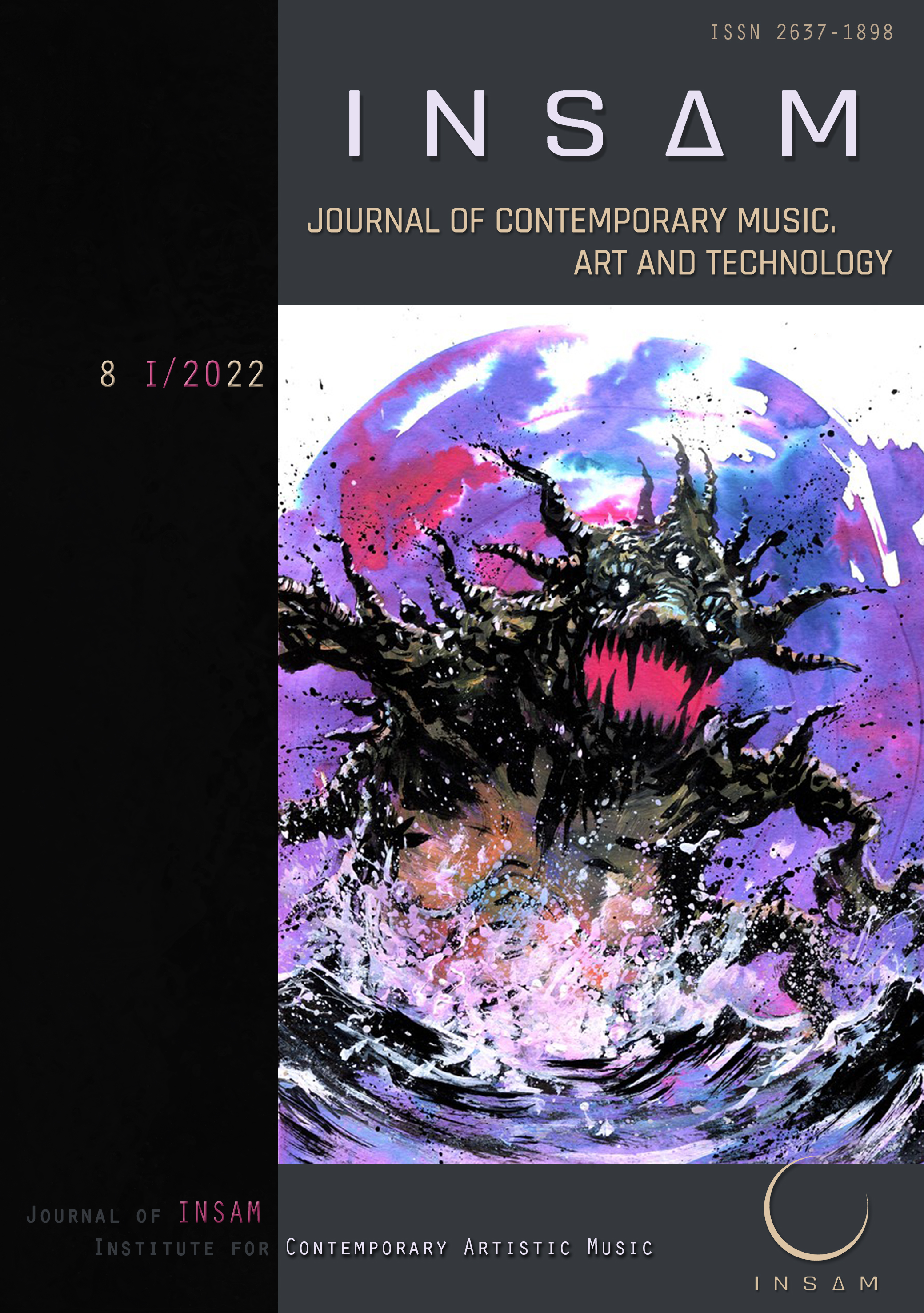Hide to Show: ‘Memefying’ Live Music
DOI:
https://doi.org/10.51191/issn.2637-1898.2022.5.8.29Keywords:
perfectionism, meme, digital performance, scenic composition, simulation, hyperreality, the RealAbstract
Michael Beil’s scenic composition Hide to Show (2021) thematizes a basic principle of social media, namely hiding mistakes, failures, or any vulnerable matters with the purpose of simulating an ever-perfect, active, and successful image and profile. Beil’s piece, with memes and memefication as a guiding principle and compositional format, plays along the hyperreal boundary between live performance and digital re-representation. The audience is continuously misled and often left guessing between real and digital, confusing a real body with its projected simulation and live performed music with a (pre)recording. Perhaps more misleading, the live music and vocals are frequently processed in real time, too. Mistakes, but also individual interpretations and authentic appropriations of the piece are smoothed out or erased. Beil’s composition may realize with this ‘fixing’ technique one ideal of today’s live performer: guaranteed perfectionism on stage. In this article, a performer-researcher from Hide to Show and a sociologist of culture and politics analyze the possibilities and limitations of digital art and Internet culture found in Beil’s work. What (new) requirements are demanded of the live performers and technicians? And how does digital simulation affect the artistic experience and aesthetics of contemporary art music and of social life itself?
Downloads
Published
Issue
Section
License
Copyright (c) 2022 INSAM Journal of Contemporary Music, Art and Technology

This work is licensed under a Creative Commons Attribution-NonCommercial-NoDerivatives 4.0 International License.
You are free to:
- Share — copy and redistribute the material in any medium or format
- The licensor cannot revoke these freedoms as long as you follow the license terms.
Under the following terms:
- Attribution — You must give appropriate credit , provide a link to the license, and indicate if changes were made . You may do so in any reasonable manner, but not in any way that suggests the licensor endorses you or your use.
- NonCommercial — You may not use the material for commercial purposes .
- NoDerivatives — If you remix, transform, or build upon the material, you may not distribute the modified material.
- No additional restrictions — You may not apply legal terms or technological measures that legally restrict others from doing anything the license permits.




